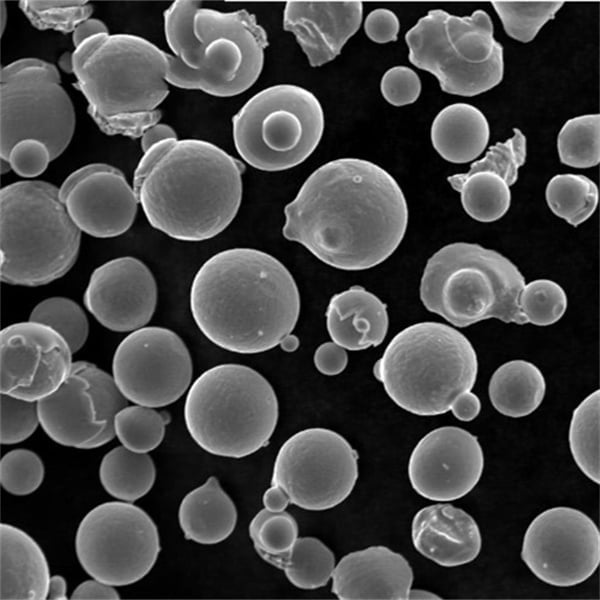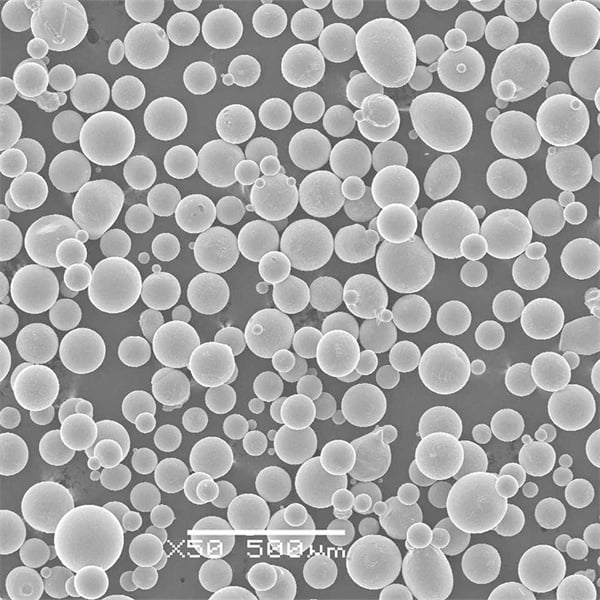Fúze v práškovém loži na bázi laseru
Obsah
Fúze v práškovém loži na bázi laseru (PBF) přináší revoluci ve zpracovatelském průmyslu a nabízí bezprecedentní přesnost, efektivitu a flexibilitu. Ale co to přesně je a proč by vás to mělo zajímat? Pojďme se ponořit hluboko do této inovativní technologie, prozkoumat její spletitost, aplikace a důvod, proč se mění ve světě výroby.
Přehled laserové práškové fúze
Laser-Based Powder Bed Fusion je aditivní výrobní proces, který využívá vysoce výkonný laser k roztavení kovových práškových částic vrstvu po vrstvě k vytvoření pevného, trojrozměrného objektu. Je to technika, která spadá pod 3D tisk, ale je speciálně přizpůsobena pro výrobu vysoce kvalitních kovových součástí.
Klíčové vlastnosti laserové práškové fúze:
- Přesnost: Dosahuje složitých detailů a složitých geometrií s vysokou přesností.
- Účinnost materiálu: Minimalizuje odpad použitím pouze nezbytného množství prášku.
- Přizpůsobení: Umožňuje vytvářet zakázkové díly na míru konkrétním potřebám.

Typy kovových prášků pro Fúze v práškovém loži na bázi laseru
Výběr správného kovového prášku je zásadní pro úspěch procesu PBF. Zde je přehled některých populárních kovových prášků používaných v PBF spolu s jejich popisy:
| Kovový prášek | Popis |
|---|---|
| Titan Ti-6Al-4V | Známý pro svůj vysoký poměr pevnosti k hmotnosti, vynikající odolnost proti korozi a biokompatibilitu, díky čemuž je ideální pro letecký průmysl, lékařské implantáty a automobilový průmysl. |
| Hliník AlSi10Mg | Kombinuje lehké vlastnosti s dobrou mechanickou pevností a tepelnou vodivostí, ideální pro automobilové a letecké komponenty. |
| Nerezová ocel 316L | Nabízí vynikající odolnost proti korozi, pevnost a tažnost, široce používaný v lékařských, námořních a chemických aplikacích. |
| Inconel 718 | Nikl-chromová superslitina s odolností vůči vysokým teplotám a dobrou pevností v tahu, používaná v letectví, plynových turbínách a jaderných reaktorech. |
| Kobalt-chrom | Vysoká odolnost proti opotřebení, biokompatibilita a pevnost, běžně používané pro dentální a ortopedické implantáty, stejně jako v leteckých aplikacích. |
| Maraging Steel (1.2709) | Známý pro svou vynikající pevnost a houževnatost po tepelném zpracování, používaný v nástrojářství, letectví a vysoce namáhaných součástech. |
| měď (Cu) | Výjimečná tepelná a elektrická vodivost, vhodná pro elektrické komponenty a tepelné výměníky. |
| Slitina niklu (625) | Nabízí vynikající odolnost proti korozi a oxidaci, vysokou pevnost, používá se v námořním, chemickém a leteckém průmyslu. |
| Nástrojová ocel (H13) | Známý pro svou tvrdost, pevnost a odolnost proti oděru, často používaný při výrobě forem, tlakovém lití a nástrojových aplikacích. |
| Titan (Ti-5Al-2,5Sn) | Dobrý výkon při vysokých teplotách a odolnost proti tečení, používaný v letectví a ve vysoce výkonných automobilových aplikacích. |
Vlastnosti a charakteristiky kovových prášků
| Kovový prášek | Složení | Vlastnosti | Aplikace |
|---|---|---|---|
| Titan Ti-6Al-4V | Ti, Al, V | Vysoký poměr pevnosti a hmotnosti, odolnost proti korozi, biokompatibilita | Letectví, lékařské implantáty, automobilový průmysl |
| Hliník AlSi10Mg | Al, Si, Mg | Lehký, dobrá mechanická pevnost, tepelná vodivost | Automobilový a letecký průmysl |
| Nerezová ocel 316L | Fe, Cr, Ni, Mo | Odolnost proti korozi, pevnost, tažnost | Lékařské, námořní, chemické zpracování |
| Inconel 718 | Ni, Cr, Fe, Nb, Mo, Ti | Odolnost vůči vysokým teplotám, pevnost v tahu | letectví, plynové turbíny, jaderné reaktory |
| Kobalt-chrom | Co, Cr, Mo | odolnost proti opotřebení, biokompatibilita, pevnost | Zubní, ortopedické implantáty, letecký průmysl |
| Maraging Steel (1.2709) | Fe, Ni, Co, Mo | Pevnost, houževnatost po tepelném zpracování | Nástroje, letectví, vysoce namáhané komponenty |
| měď (Cu) | Cu | Tepelná a elektrická vodivost | Elektrické komponenty, výměníky tepla |
| Slitina niklu (625) | Ni, Cr, Mo, Nb | Odolnost proti korozi a oxidaci, vysoká pevnost | Námořní, chemický, letecký |
| Nástrojová ocel (H13) | Fe, Cr, Mo, Si, V | Tvrdost, pevnost, odolnost proti oděru | Výroba forem, tlakové lití, obrábění |
| Titan (Ti-5Al-2,5Sn) | Ti, Al, Sn | Výkon při vysokých teplotách, odolnost proti tečení | Letectví, vysoce výkonný automobilový průmysl |
Aplikace laserové práškové fúze
Laser-Based PBF se díky své všestrannosti a přesnosti šíří napříč různými průmyslovými odvětvími. Zde je pohled na to, kde se používá a proč je tak účinný:
| Průmysl | Aplikace |
|---|---|
| Aerospace | Součásti motoru, konstrukční díly, lehké držáky |
| Lékařský | Zakázkové implantáty, protézy, chirurgické nástroje |
| Automobilový průmysl | Lehké komponenty, zakázkové díly, vylepšení výkonu |
| Nástroje | Vstřikovací formy, formy na tlakové lití, zakázkové obrábění |
| Šperky | Vlastní návrhy, složité vzory, rychlé prototypování |
| Energie | Lopatky turbín, výměníky tepla, palivové trysky |
| Elektronika | Chladiče, elektrické komponenty, zakázkové skříně |
| Zubní lékařství | Korunky, můstky, zubní implantáty |
| Námořní | Díly odolné proti korozi, lehké komponenty |
| Architektura | Zakázková příslušenství, navrhnout prototypy |
Výhody Fúze v práškovém loži na bázi laseru
Proč si laser-Based Powder Bed Fusion získává tolik pozornosti? Zde je několik přesvědčivých důvodů:
- Přesnost a detail: Schopný vyrábět složité a složité geometrie, které jsou náročné pro tradiční výrobní metody.
- Účinnost materiálu: Minimalizuje odpad použitím pouze požadovaného množství kovového prášku.
- Přizpůsobení: Snadno vytvářejte díly na míru podle konkrétních požadavků.
- Rychlost a efektivita: Rychlejší výrobní časy ve srovnání s konvenčními metodami.
- Pevnost a odolnost: Vyrábí díly s vynikajícími mechanickými vlastnostmi.
Nevýhody laserové práškové fúze
Navzdory mnoha výhodám má Laser-Based PBF také některá omezení:
- Náklady: Vysoká počáteční investice do vybavení a materiálů.
- Složitost: Vyžaduje specializované znalosti a dovednosti pro efektivní provoz.
- Omezení velikosti: Typicky omezeno na menší části kvůli velikosti stavební komory.
- Povrchová úprava: Pro dosažení požadované kvality povrchu může vyžadovat dodatečné zpracování.
Specifikace, velikosti, třídy a standardy
| Kovový prášek | Specifikace | Velikosti | Známky | Normy |
|---|---|---|---|---|
| Titan Ti-6Al-4V | ASTM B348, ASTM F1472 | 15-45 µm, 45-106 µm | 5. třída | ISO 5832-3, AMS 4928 |
| Hliník AlSi10Mg | CZ AC-43400 | 20-63 um, 45-90 um | ||
| Nerezová ocel 316L | ASTM A276, ASTM F138 | 15-45 µm, 45-106 µm | ISO 5832-1 | |
| Inconel 718 | AMS 5662, ASTM B637 | 15-45 µm, 45-106 µm | ||
| Kobalt-chrom | ASTM F75, ASTM F1537 | 15-45 µm, 45-106 µm | ||
| Maraging Steel (1.2709) | DIN 1.2709, AMS 6514 | 15-45 µm, 45-106 µm | ||
| měď (Cu) | ASTM B170 | 20-63 um, 45-90 um | ||
| Slitina niklu (625) | AMS 5666, ASTM B443 | 15-45 µm, 45-106 µm | ||
| Nástrojová ocel (H13) | ASTM A681 | 15-45 µm, 45-106 µm | ||
| Titan (Ti-5Al-2,5Sn) | ASTM B348 | 15-45 µm, 45-106 µm |
Podrobnosti o dodavatelích a cenách
| Dodavatel | Dostupné kovové prášky | Ceny (za kg) | Umístění |
|---|---|---|---|
| Tesařská technologie | Titan, hliník, nerezová ocel, inconel, kobalt-chrom | $200 – $600 | USA |
| Sandvik | Titan, hliník, nerezová ocel, inconel, kobalt-chrom | $250 – $700 | Švédsko |
| Přísady GKN | Titan, hliník, nerezová ocel, inconel, kobalt-chrom | $220 – $650 | Německo |
| Technologie LPW | Titan, hliník, nerezová ocel, inconel, kobalt-chrom | $230 – $680 | Spojené království |
| Höganäs | Titan, hliník, nerezová ocel, inconel, kobalt-chrom | $240 – $690 | Švédsko |
| AP&C | Titan, hliník, nerezová ocel, inconel, kobalt-chrom | $210 – $620 | Kanada |
| Aubert & Duval | Titan, hliník, nerezová ocel, inconel, kobalt-chrom | $220 – $640 | Francie |
| Technologie povrchů Praxair | Titan, hliník, nerezová ocel, inconel, kobalt-chrom | $230 – $660 | USA |
| Pokročilé prášky a nátěrové hmoty (AP&C) | Titan, hliník, nerezová ocel, inconel, kobalt-chrom | $220 – $650 | Kanada |
| Renishaw | Titan, hliník, nerezová ocel, inconel, kobalt-chrom | $230 – $670 | Spojené království |

Porovnání výhod a nevýhod Fúze v práškovém loži na bázi laseru
| Aspekt | Výhody | Omezení |
|---|---|---|
| Přesnost a detail | Vysoká přesnost a schopnost vytvářet složité geometrie | Může vyžadovat dodatečné zpracování pro povrchovou úpravu |
| Efektivita materiálu | Minimální odpad, použito pouze nezbytné množství prášku | Vysoká cena kovových prášků |
| Přizpůsobení | Snadno vytvářejte díly na míru podle konkrétních potřeb | Složitost v designu a provozu |
| Rychlost a efektivita | Rychlejší výrobní časy ve srovnání s tradičními metodami | Čas počátečního nastavení a kalibrace |
| Pevnost a odolnost | Vyrábí díly s vynikajícími mechanickými vlastnostmi | Omezení velikosti kvůli omezením vestavěné komory |
| Náklady | Dlouhodobá úspora nákladů na materiál a efektivitu výroby | Vysoká počáteční investice do vybavení a materiálů |
FAQ
Co je laserová fúze v prášku?
Laser-Based Powder Bed Fusion (PBF) je aditivní výrobní proces, který využívá vysoce výkonný laser ke spojování kovových práškových částic vrstvu po vrstvě za účelem vytvoření pevného, trojrozměrného objektu.
Jaké typy kovových prášků lze použít v PBF?
Lze použít různé kovové prášky, jako je titan Ti-6Al-4V, hliník AlSi10Mg, nerezová ocel 316L, Inconel 718, kobalt-chrom, maraging ocel, měď, slitina niklu 625, nástrojová ocel H13 a titan Ti-5Al-2,5Sn.
Jaké jsou výhody laserové práškové fúze?
Mezi výhody patří vysoká přesnost a detail, efektivita materiálu, přizpůsobení, rychlost a efektivita a výroba dílů s vynikajícími mechanickými vlastnostmi.
Jaká jsou omezení laserové práškové fúze?
Mezi omezení patří vysoké počáteční náklady, složitost provozu, omezení velikosti a potřeba následného zpracování pro dosažení požadovaných povrchových úprav.
Která průmyslová odvětví těží z laserové práškové fúze?
Průmyslová odvětví, jako je letecký a kosmický průmysl, lékařství, automobilový průmysl, nástroje, klenotnictví, energetika, elektronika, zubní lékařství, námořní průmysl a architektura, těží z PBF díky jeho všestrannosti a přesnosti.
Jak si stojí PBF ve srovnání s tradičními výrobními metodami?
PBF nabízí rychlejší výrobní časy, vyšší přesnost a schopnost vytvářet složité geometrie, které jsou náročné pro tradiční metody. S tím jsou však spojeny vyšší počáteční náklady a provozní náročnost.
Závěr
Laser-Based Powder Bed Fusion dláždí cestu pro budoucnost výroby. Jeho schopnost vyrábět vysoce přesné, přizpůsobené díly s minimálním odpadem transformuje průmyslová odvětví z letectví na lékařství. I když přichází s řadou výzev, výhody daleko převažují nad omezeními, což z něj činí cenný doplněk k moderní sadě nástrojů pro výrobu. Ať už jste inženýr, designér nebo výrobce, pochopení a využití síly PBF vám může otevřít nové dveře inovací a efektivity ve vaší práci.
Sdílet na
MET3DP Technology Co., LTD je předním poskytovatelem řešení aditivní výroby se sídlem v Qingdao v Číně. Naše společnost se specializuje na zařízení pro 3D tisk a vysoce výkonné kovové prášky pro průmyslové aplikace.
Dotaz k získání nejlepší ceny a přizpůsobeného řešení pro vaše podnikání!
Související články

Vysoce výkonné segmenty lopatek trysek: Revoluce v účinnosti turbín díky 3D tisku z kovu
Přečtěte si více "O Met3DP
Nedávná aktualizace
Náš produkt
KONTAKTUJTE NÁS
Nějaké otázky? Pošlete nám zprávu hned teď! Po obdržení vaší zprávy obsloužíme vaši žádost s celým týmem.

Kovové prášky pro 3D tisk a aditivní výrobu
SPOLEČNOST
PRODUKT
kontaktní informace
- Město Qingdao, Shandong, Čína
- [email protected]
- [email protected]
- +86 19116340731
















